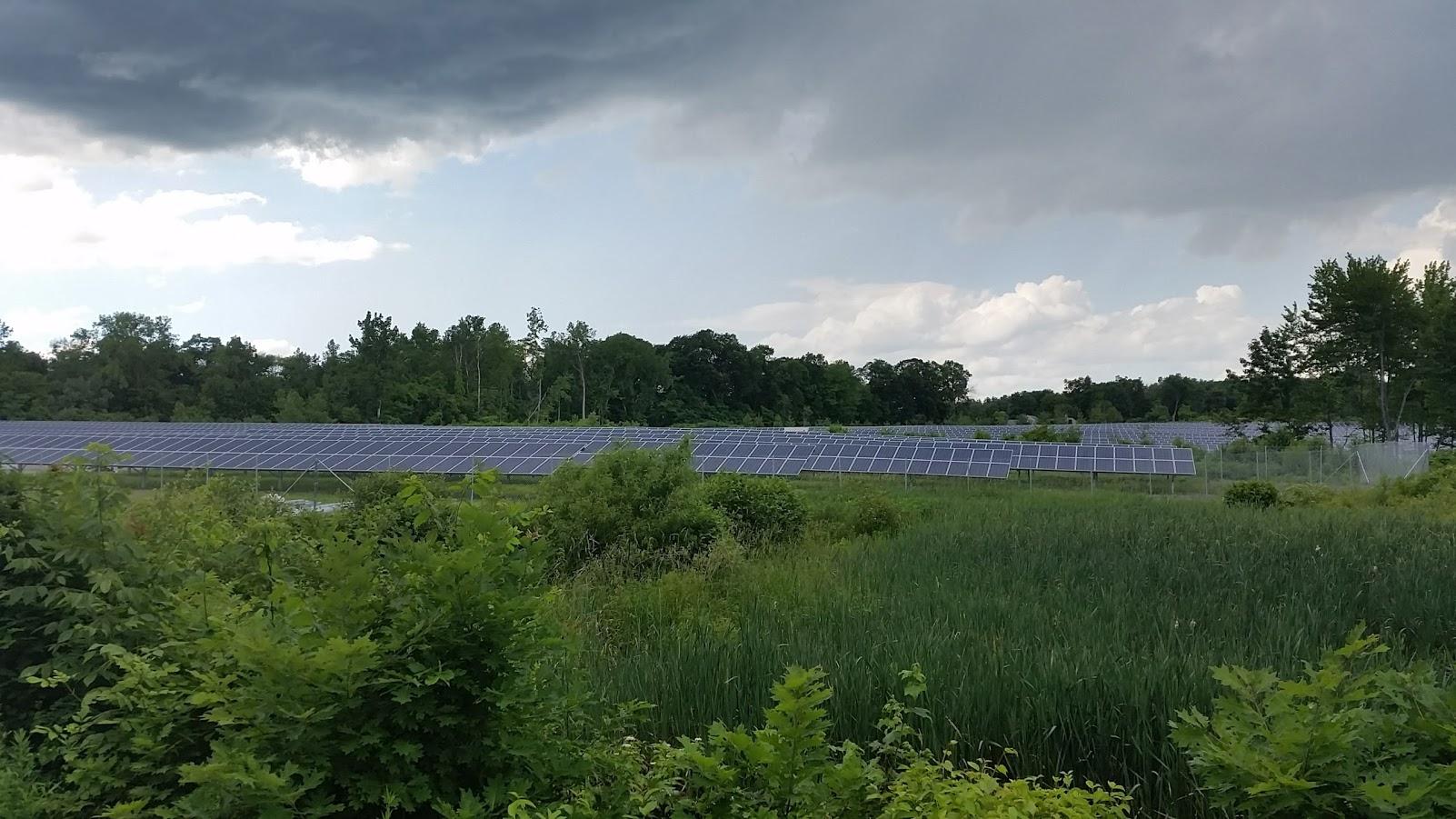For Farmers Looking To Make Ends Meet, The Sun Provides A Controversial Harvest

Kevin Sullivan put solar panels on a portion of his 60 acres of property in Suffield, Connecticut.
Photo by Patrick Skahill for WNPR
As Kevin Sullivan slowly rumbles his pickup truck across his 60 acres of property near the Connecticut-Massachusetts border, he leans in and asks a question: What’s farmland?
“You picture the one cow, Farmer Joe like me,” he said. “I’m going to tell you a story about my ‘tomaters’ and my peppers.”
But what non-farmers generally don’t picture, he said, is how to pay for it.
“So there’s this whole, you know, what’s farmland? What’s useable farmland? Well, useable farmland is something that can sustain a household,” Sullivan said.
And for awhile, Sullivan said one part of his property was pretty unusable. About 15 acres, where the soil was heavy and bad for growing. He tried raising corn and hay, but then a solar developer came along, offering him a lot of money to rent the land, put up solar panels, and sell that energy back into the grid. He said the opportunity was too good to pass up.
“The money that comes off that acreage exceeds anything else I could do out there,” Sullivan said.
For solar developers, southern New England is ideal. Tax credits and locked-in contracts with power utilities can help the finances work out. And many New England farms are basically “move-in ready.”
